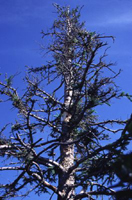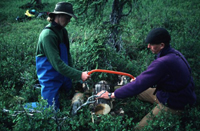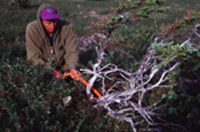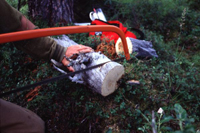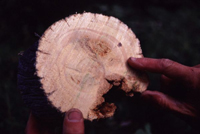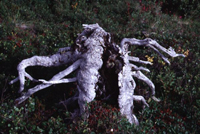|
|
|||||
|
|||||
|
Note: We suggest that you learn about tree coring before reading this page.
|
|||||
|
|
|||||
Cross-dating:Trees growing in the same place are affected by the same environmental conditions each year, so we would expect to find patterns in the tree rings for all the trees in one general area. For example, a cold year will cause trees to grow slowly, producing a small amount of wood, and so the tree rings would be narrow. A warm year will allow trees to produce a large amount of wood, and so the tree rings would be wider. If you look at a group of trees, you can notice that the group shows similar growth patterns. Cross-dating is the process of matching up these patterns of wide and narrow tree rings. If we want to know when a tree died, we can compare the ring patterns to live trees. After we match up the pattern, the "extra" rings in the live tree (that the dead tree does not have because it has not been growing) equal the number of years the dead tree has been dead. Want to learn more about cross-dating? Click here to link to a page to see how tree cores match up. Want to TRY cross-dating and learn more about it? Click here to link to a great page that takes you through the process |
|||||
|
|
|||||
All Rights Reserved (R) Middlebury College Biology, 1999, 2000

